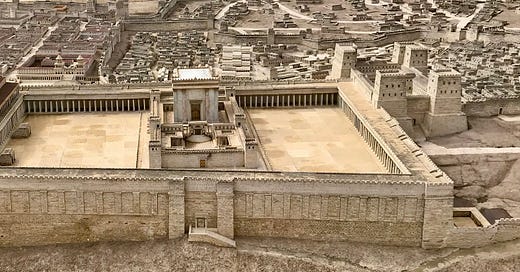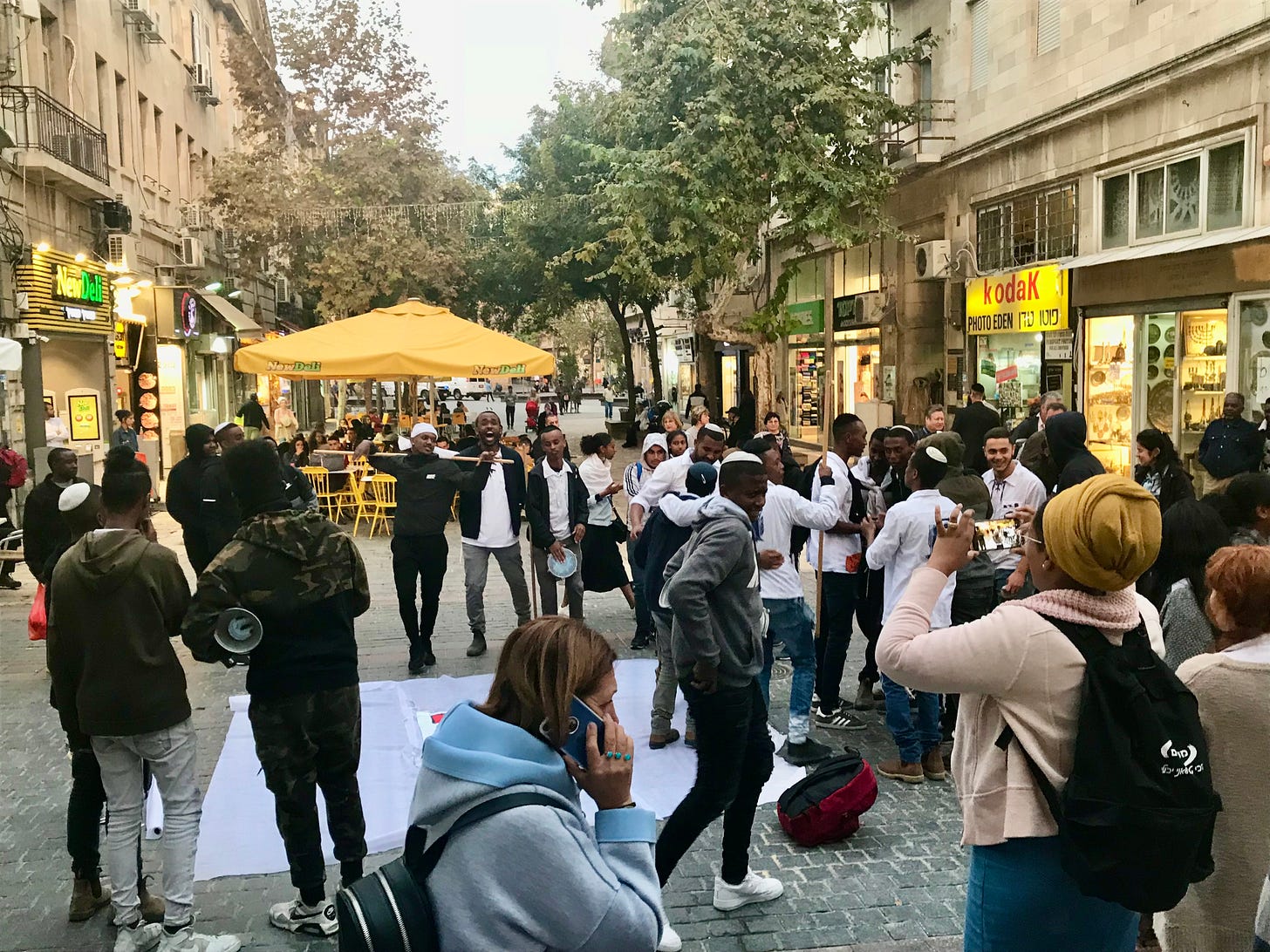The war is escalating and the horror stories continue. I have been linking to quite a few, but it may be that the links not always work well or that they have been frustrated deliberately. Yesterday, a tweet from Israeli tech personality Hillel Fuld with video from arriving soldiers at Ben-Gurion airport disappeared briefly and it still has a warning saying ‘violent speech’ attached to it. WTF? The actual tweet appeared on Dutch media and I let Hillel know about it, little did we know it was somehow flagged, maybe because international media picked it up. An Instagram account that is an ongoing and beautiful photographic journey ‘Mystery of Jerusalem’ from a young woman who immigrated to Israel and converted to Judaism completely disappeared and was deleted by the platform a few days ago. She had to start all over again. Really? And the Jerusalem Post, Israel’s English paper of record, was unreachable for the first few days of the war. Dutch-Jewish writer Esther Voet’s ‘X’ feed disappeared briefly too yesterday. A full front has been opened online and taking down Jewish or pro-Israel content is being blocked or deleted with all available tools. It was to be expected, but that big tech is somehow facilitating and/or not stopping this is baffling.
Jews are under attack everywhere now and we have to stand up and support where we can. If I can’t convince you, Eve Barlow will.
Israel 101
Someone asked me yesterday if the model of Switzerland would not be a way to mitigate the Israeli-Palestinian conundrum and create a federal entity where everyone would happily get along. This was an unworkable idea before Saturday, and as of today no one would even consider it. But it does bring up the history of the situation and many are not aware of the following timeline of events, call it a 101 on Israel’s emergence in the Middle East. Here we go.
Jewish people existed in the land of Israel some three-thousand years ago based on archeological evidence, but they were there possibly even longer and think in terms of at least 5,000 years. After the destruction of the Second Temple around the year 70 AD the Jews were booted out of the land of Israel and that started the diaspora. Jews now lived everywhere and only a small fraction remained in the homeland. Fast forward to 1947 when the British governed what was now called Palestine, the area of current day Israel inhabited by Muslims and Jews. The latter began to return en masse after the Holocaust in the years following WWII. The British who had defeated the Ottoman Empire and in return now governed the present day areas of Israel and Jordan wanted desperately to get out of what was an escalating conflict between the Jewish and Arab/Palestinian populations. The issue was presented to the UN who voted that the area be split 50/50 between the two groups with Jerusalem as a sort of international and neutral enclave. The Jews were fine with this, in fact they treated it as a victory as it was more than they had ever hoped for, but the Arab world declared war. It is crucial here to understand that UN resolution was rejected by the Arab world. So with that the 1948 War of Independence started and Israel won it against all expectations with a ragtag army and second hand war supplies from Europe. In the process they claimed slightly more than what the UN mandate stipulated, but these new borders - required to give Israel a modicum of security - were internationally recognized.
Three key wars followed where Arab nations attacked Israel, in 1956, 1967 and 1973 although in 1967’s Six Day War it was Israel that launched a pre-emptive strike. The latter was so successful, beyond everyone’s belief, that Israel ended up with four key occupied areas: the Golan Heights from Syria, Judea and Samaria (or West Bank) from Jordan and Gaza and the Sinai Peninsula from Egypt. It also brought the until then divided city of Jerusalem together again, including all the holy sites. Note that there were no Palestinian territories created, Egypt and Jordan annexed what Israel had not occupied.
After the 1973 Yom Kippur War, Egypt and Israel made peace under Anwar Sadat (who was murdered for it in 1981) and Menachem Begin, one of Israel’s most iconic prime ministers. After this under the guidance of the US and some European nations a peace process was initiated that sought to let Arabs on Israeli occupied territory assume a measure of sovereignty in return for recognizing Israel and established a lasting peace. This all happened in the early 90s with Israel also signing peace deal with Jordan. The world was happier than ever, believing that peace in the Middle East could be accomplished: investors rushed in and the wars were over.
Or so we thought. Israel was divided on the deal and its then prime Minister Yitzhak Rabin was murdered for it by a fanatic. The Palestinian side was, as it started to emerge, never serious and kept engaging in horrific terror attacks at a time when the peace deal was close, they are known as the First Intifada and the Second Intifada. The latter which started in 2000 effectively put an end to any peace efforts and it was Bill Clinton who tried in the last days of his presidency to salvage a deal that most others had effectively given up on. The wave of terror (suicide bombers in Israeli public busses and nightclubs) ended any chance of finding a working and peaceful compromise and it is those years that the Israeli left began to collapse with Ehud Barak (1999-01) the last centre-left leader Israel had. Ariel Sharon took the dramatic step to vacate Gaza and build the wall to separate Israel from the self-governing Palestinian areas. Hamas took control of Gaza in 2006 and Bibi Nethanyahu returned to power in 2009 and since then we have been in a status quo with occasional attack on Israel through missiles and other tools. That said the reign of Bibi was seen as a relatively peaceful one that kept hostilities to a minimum. And yes it spawned a level of complacency that was laid bare this last Saturday.
Israel has defended itself and gone along with every peace attempt, often under pressure from the US. The Arab world has made its peace with Israel, Egypt, Jordan, some of the Gulf States, Morocco and Saudi-Arabia almost. Syria and Lebanon and Qatar remain holdouts. But, and this is a key thing to understand, the Arab nations have not ever wanted to provide real support for Palestinians. Even now with the war in Gaza raging and hundreds and thousands of refugees, no one is lending a real helping hand. The uncompromising attitude, the never ending violence have made the Palestinian people a people without a welcome, even among their Arab brethren. The final instalment of terror this week may be the end of their cause. Israelis will not ever want to live with them, the Arab world will wash their hands off them and the international community will beat a retreat, disappointed, and now only pursue policies that serves only their direct interests. The future is less clear. A two-state solution is no longer feasible, something which most experts long agreed on. If you hear politicians and diplomats dust off the ‘go to the table’ and ‘two state solution’; talk, remember that they are still living in 1990s, maybe even in 1947. Both the Israelis and Palestinians have long moved on in very separate ways.
One point to underline: Israel is not an apartheid state. Some 75% of the state is Jewish and around 20% Arab/Palestinian, followed by Druzes and some other smaller groups. There are also black Ethiopian Jews. All are equal, eligible to vote and have access to all services the state offers. Attempts in the West to equate Israel to the former South Africa are aimed at exactly what was so successful in the latter case: boycott and destroy the framework of the state so that something else can take its place. This week we have seen what that something else looks like. It is a shame that organizations like Amnesty International have engaged in this deeply anti-Semitic effort to delegitimize the State of Israel and by extension its people.
Finally, this was a summary I put together in a few hours in between meetings … there so much more detail and colour to add, but hope it will help in assessing the situation.
Photos: the Second Temple in Jerusalem before its destruction. This is where the Dome of the Rock and the al-Aqsa Mosque now stand. The Western Wall (better known as ‘the Kotel’ is what remains and is the holiest shrine for Jews.
Ethiopian Jews celebrating on the streets of Jerusalem, Ben Yehuda Street to be precise.





Thank you for the history recap of a precious part of the world in conflict now. The context provided in your writing is useful.
Please remind me: Are the non-combatant civilians of the opposite sides being allowed a safe refuge?
This conflict will end, eventually.
Thank you so much for your insightful reporting on this. I remember when I was a kid I would read the newspaper but it was never quite clear to me what was going on in Israel. I finally asked my dad one day about it and he gave the longest sigh before trying to encapsulate the history for me. Over 50 years later and nothing has really changed. I think it's time for Israel to become it's own state.